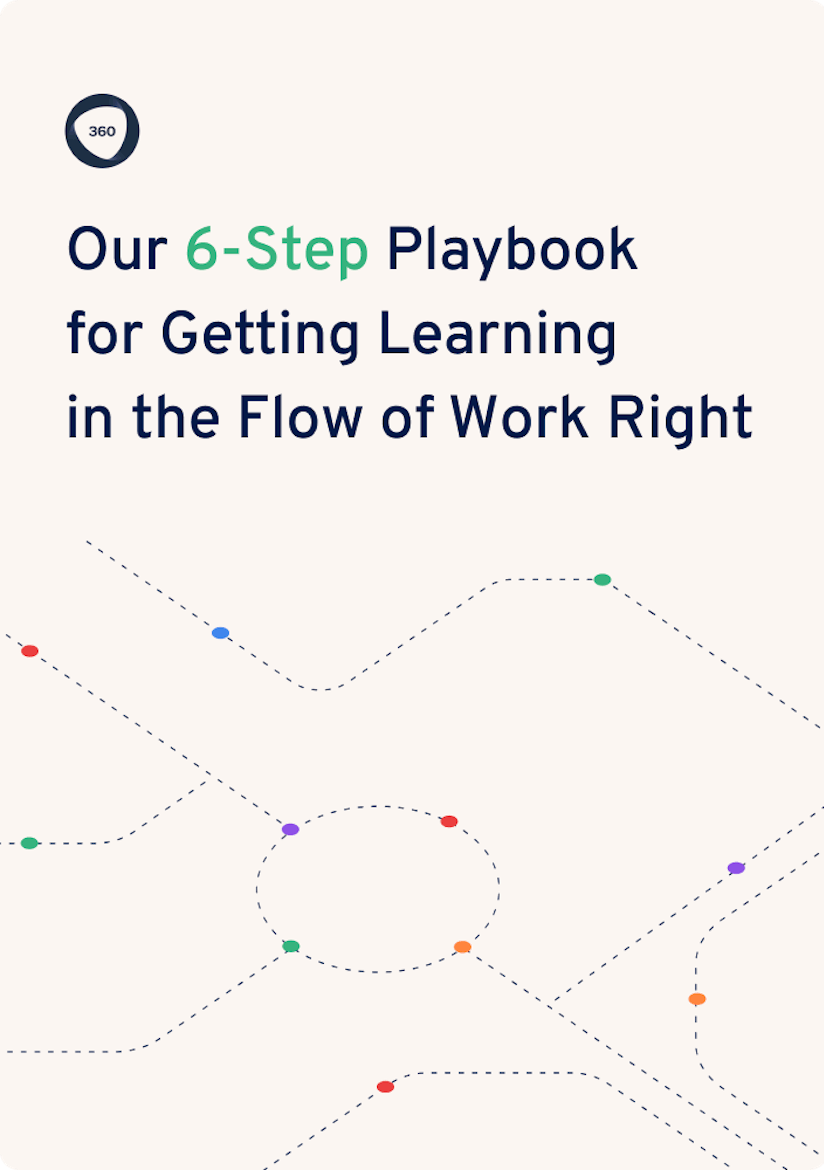Chapter 4: Half of German Employees Need More Breathing Room to Learn Effectively
German L&D teams have been using the term ‘learning in the flow of work’ more frequently in recent years, particularly in the context of the acute lack of digital skills in local companies. According to a study, less than half of German small and medium enterprises (45%) actively invest in the further training of their employees to prepare them for the new work requirements of the digital and climate-neutral economy.
But the companies that are focused on developing their employees are facing major challenges. Skills and knowledge are becoming obsolete almost overnight, and as a result, German L&D teams are unable to upskill quickly enough.
So, how can learning in the flow of work solve this and how far have German companies implemented it into their organizations? We found that while upskilling is more effective when employees can learn in a self-directed manner, many L&D leaders have their hands tied when it comes to providing learners with the right learning opportunities and tools.
The data in this chapter represents responses from 472 German employees (learners) and 251 German L&D decision-makers.
German employees want to learn to stay motivated
First, a basic observation: German employees not only have to learn–they want to. Half of the respondents (50%) say they take advantage of every learning opportunity that is available in their organization. Another 42% participate in learning opportunities that are relevant to their job.

When we asked employees about their motivation for learning, 62% say learning keeps them motivated and confident on the job. 59% also cite they want to learn to help them do their job better.
Learning is therefore a decisive factor not only for individual and company performance but also for employee motivation and retention.
What options do German employees have for learning at work?
German employees give a mixed assessment when it comes to the effectiveness of certain types of training opportunities. Only 29% of those who have received online training found it helpful in carrying out their work. 38% say the same with regard to in-house development programs.
The numbers paint a different picture when it comes to learning from peers: 60% rate this as very effective. Learning through coaches and mentors scores almost as well (58%). In addition, 44% find that training themselves as they do their job is "very effective".
Only 29% of those who have received online training found it helpful in carrying out their work.
German employees also show clear preferences with regard to the best time to learn. Almost one in two learns most effectively as they go, while only 19% learn best when they commit to a day of training once a year.

When examining the effectiveness of learning opportunities, situational peer learning, coaching, and self-directed learning in the flow of work emerge as the top performers in our study.
Are German employees learning the way they want to?
Our survey clearly shows Germany employees’ learning preferences. But do they have the opportunity to learn according to these preferences in their everyday work?
Many say no. The reason most frequently cited is a lack of time (39%). Learning doesn’t seem to be an integral part of working life; instead, additional time has to be carved out in order to learn. In addition, 31% say training isn’t offered in a way that fits in their workflow. Last but not least, 24% of people state that the training offered is not relevant to their job.

In return, employees would take more time for learning if they could do it during working hours and if their manager could offload work to make more time for it encouraged them to do so (49%). In addition, 45% of respondents would schedule more time for learning if what they learned would help them become better at their job and 31% say if it were necessary for a promotion.
It’s clear many German employees lack training opportunities that both fit seamlessly into their work processes and can be applied directly to their tasks, as well as promote their career development.
Do German L&D leaders recognize the potential of learning in the flow of work?
The good news is that for 35% of German L&D decision-makers, promoting learning in the flow of work is a high priority this year. About the same number of respondents give the topic medium priority. In one in five companies, learning in the work process is a higher priority this year than it was last year.

It appears that some companies have made learning in the flow of work a focus of strategic HR development in order to meet new learning requirements. However, as this survey reveals, employees do not yet have sufficient access to this way of learning.
35% of German L&D decision-makers, promoting learning in the flow of work is a high priority this year.
What hurdles do L&D teams face when facilitating learning in the flow of work opportunities?
Many L&D leaders would like to devote more time to the topic of learning in the flow of work, but lack the necessary resources and budget (35%). The cause may lie in another obstacle: 20% of L&D leaders say they do not receive enough support from leadership teams to effectively promote learning in the flow of work.

When decision-makers are not aware of the economic impact of effective learning in the workplace, this can lead to a lower allocation of L&D resources. However, when learning on the job is recognized as a long-term solution to skills shortages and a clear competitive advantage, L&D teams have a better chance of securing an adequate budget for learning embedded in the work process.
However, technical obstacles are also at play: 51% of the L&D leaders surveyed state their learning management systems do not effectively integrate with business tools to better provide learners with training at the point of need.
51% of the L&D leaders surveyed state their learning management systems do not effectively integrate with business tools to better provide learners with training at the point of need.
Can learning in the flow of work help overcome the German skills gap?
Our German survey shows that employees want hands-on and self-directed learning. They rate situational learning from and with peers or coaches as the most effective learning method. But the implementation of learning in the flow of work is often held back by a lack of time and access to appropriate learning opportunities.
L&D leaders now have the opportunity to recognize employee learning preferences and to address the prominent lack of skills, particularly digital skills, with solutions for continuous learning in the workflow.
Technology can play into L&D teams’ hands: Digital learning platforms and integrations with business tools offer a great opportunity to identify learning needs, connect employees in learning communities, and share internal expertise in the platforms they already use. This is a great option for German companies looking for a better way to realize the value of learning in the flow of work.
For more practical recommendations on getting learning in the flow of work right, check out our six-step playbook. You’ll learn:
- What mistakes to avoid
- Why uncovering evergreen problems and critical points of failure using data is the first thing you should do
- How to understand your learners better
- How to leverage subject-matter experts to facilitate learning in the flow of work
- What types of resources work best for flow of work

Practical, hands-on learning in 6 simple steps
By providing your contact info, you agree to receive communications from 360Learning. You can opt-out at any time. For details, refer to our Privacy Policy.


